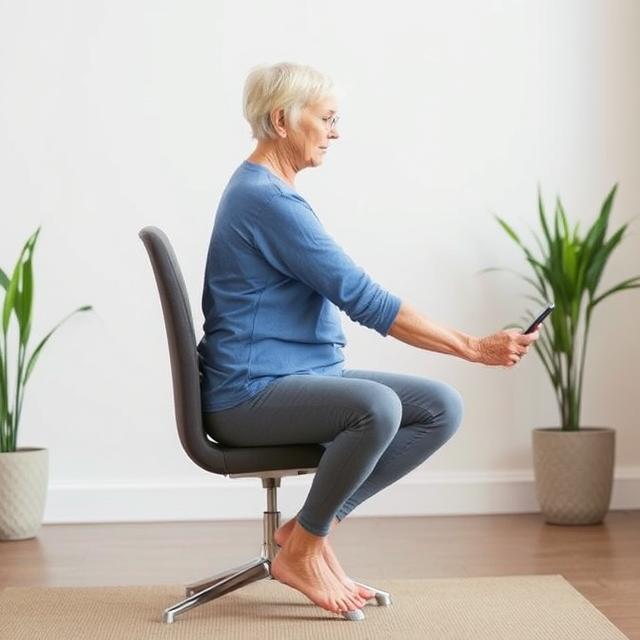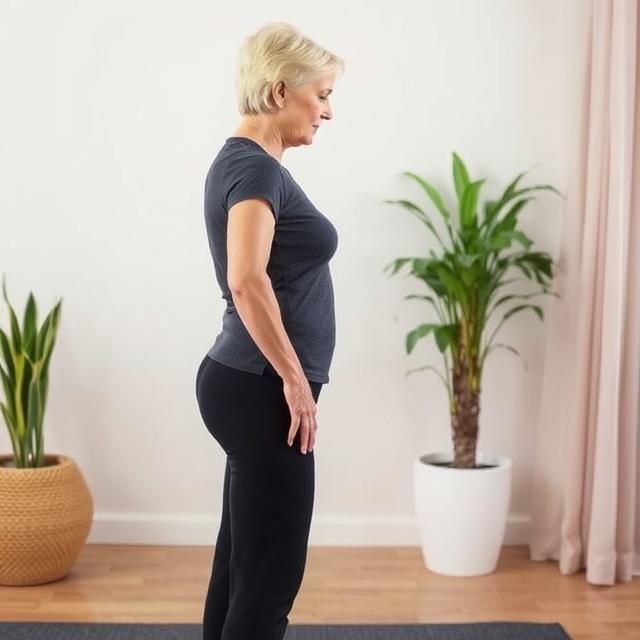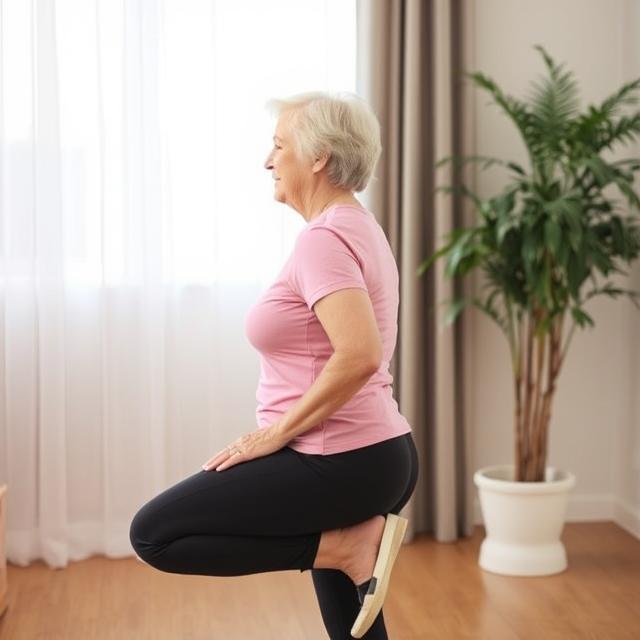As we age, our posture tends to decline due to a combination of factors such as reduced muscle strength, joint stiffness, spinal changes, and sedentary lifestyles. Poor posture can lead to a host of physical issues including back and neck pain, decreased mobility, impaired balance, and even compromised breathing. Fortunately, by adopting certain smart practices, you can maintain and even improve your posture over time. The following seven tips are not quick fixes but essential habits that support spinal health, muscle alignment, and overall body awareness. Implementing them consistently can greatly enhance your quality of life and help you stand tall with confidence and ease, no matter your age.
1. Build a Strong Core to Support Your Spine
The core isn’t just about visible abs; it includes deep muscles that stabilize your spine, pelvis, and shoulders. As we grow older, the strength of these muscles naturally declines unless we take deliberate action. A strong core helps distribute weight evenly, reducing the risk of spinal strain and improving balance. Engage in exercises like planks, bird-dogs, and dead bugs, which target both superficial and deep abdominal muscles. Incorporating Pilates or yoga into your routine is also highly beneficial, as these disciplines emphasize controlled movement and alignment. It’s crucial not to confuse intense workouts with effective ones—form and consistency matter more than intensity at this stage. Aim for low-impact, targeted movements that enhance core strength while protecting joints. Additionally, be mindful of engaging your core during everyday activities like walking, sitting, or lifting objects. This conscious activation creates a habit loop where your body instinctively maintains better posture without deliberate effort. A solid core acts like a central anchor for the body, giving you the stability needed to stand tall and move confidently through the day.

2. Prioritize Daily Posture Checks
One of the most overlooked habits for maintaining good posture is simply checking in with your body regularly. As we age, we often become disconnected from our physical alignment, especially when sitting for long periods or using electronic devices. Make it a habit to assess your posture several times a day. Whether you’re sitting at your desk, standing in line, or walking through a store, take a moment to notice: Are your shoulders slouched? Is your head jutting forward? Are your hips aligned over your ankles? Once you catch these misalignments, gently adjust—pull your shoulders back and down, lengthen your spine, and tuck your chin slightly to align your head with your spine. Consider setting gentle reminders on your phone or smartwatch every couple of hours. Even postural awareness during passive activities like watching TV or reading can lead to subconscious corrections that benefit you in the long run. Over time, these micro-adjustments create a neurological imprint, training your brain to recognize and prefer proper posture. This daily self-awareness fosters mindfulness, enhances muscle memory, and helps counteract the natural tendency toward slouching that often accompanies aging.

3. Stretch Regularly to Combat Stiffness
Flexibility plays a critical role in maintaining good posture. As we age, muscles and connective tissues naturally lose elasticity, leading to stiffness, reduced range of motion, and misalignments. Daily stretching can counteract these changes by lengthening tight muscles, improving circulation, and relieving joint tension. Focus on stretching key areas that commonly contribute to poor posture, such as the hip flexors, hamstrings, chest, shoulders, and neck. Incorporating a full-body stretching routine in the morning or evening—even just 10 to 15 minutes—can make a significant difference over time. Yoga is an excellent option, offering both passive and active stretches that are gentle yet effective. Make it a point to hold each stretch for at least 30 seconds to encourage muscle release and avoid bouncing, which can cause injury. In addition, stretching encourages better body awareness, allowing you to detect subtle imbalances before they become problematic. Use tools like resistance bands or foam rollers to deepen your stretches and enhance mobility. With regular stretching, you’ll not only feel more limber but also stand taller and move more freely. This consistent practice is a powerful, low-cost investment in your long-term postural health.

4. Stay Active and Avoid Prolonged Sitting
Sedentary lifestyles are one of the leading contributors to poor posture. Long periods of sitting—especially with bad form—can lead to muscle imbalances, spinal compression, and a weakened core. Aging only exacerbates these issues, making it essential to remain as active as possible. Incorporate movement into your daily routine by standing up every 30 to 60 minutes to walk, stretch, or simply shift your position. Low-impact exercises like walking, swimming, tai chi, or light dancing are excellent choices that promote circulation, joint flexibility, and muscle tone. Desk-bound? Try a standing desk or alternate between sitting and standing throughout the day. If mobility is a challenge, even seated exercises or light stretching can offer benefits. Pay attention to how you sit—choose a supportive chair, keep your feet flat on the floor, and avoid crossing your legs for extended periods. A dynamic lifestyle helps maintain musculoskeletal strength, prevents tightness, and reduces the risk of postural decay. Remember, the body thrives on movement. The more you incorporate it into your routine, the easier it becomes to maintain upright posture, balance, and a youthful gait well into your senior years.

5. Train Your Back Muscles for Upright Support
Strong back muscles are essential for good posture. They act as scaffolding for your spine and shoulders, keeping them aligned and preventing the hunched or rounded appearance that often accompanies aging. As we get older, these muscles tend to weaken from disuse or strain, contributing to kyphosis or the dreaded “dowager’s hump.” Strengthening the upper and lower back through specific exercises can reverse or prevent these effects. Rows, reverse flys, and lat pulldowns—either with resistance bands, dumbbells, or gym machines—are excellent for targeting the rhomboids, traps, and lats. Even bodyweight exercises like superman holds and wall angels offer powerful results. It’s important to maintain proper form to avoid injury and maximize benefit, so consider consulting a physical therapist or fitness professional for guidance. In addition to dedicated workouts, practice good ergonomics while sitting or working. A strong, well-trained back doesn’t just improve posture—it reduces pain, increases stamina, and supports every movement you make throughout the day. Cultivating these muscles empowers you to carry yourself with poise and strength, counteracting the gravitational pull that tends to take hold as we age.

6. Use Ergonomics to Your Advantage
Your environment can either support or sabotage your posture. Poor ergonomics—whether at home, work, or while driving—often leads to cumulative strain on the spine and muscles. Creating a posture-friendly environment is one of the smartest ways to maintain alignment with minimal conscious effort. Start with your workstation: your screen should be at eye level, your keyboard and mouse should allow for relaxed shoulders, and your chair should support the lower back while keeping feet flat on the floor. Invest in ergonomic tools like lumbar cushions, footrests, and standing desks if needed. At home, evaluate your seating arrangements—avoid couches that make you sink or beds that don’t support your spine. Even something as simple as how you hold your phone matters; avoid craning your neck downward for extended periods. Use voice commands or prop your device to eye level. When driving, adjust your seat to keep your back straight and shoulders relaxed. Good ergonomics create a passive support system that reinforces proper posture throughout your daily activities. These subtle adjustments, once integrated, become powerful allies in maintaining long-term alignment and minimizing wear and tear on your aging body.

7. Practice Mind-Body Disciplines Like Yoga or Tai Chi
Mind-body practices are among the most effective ways to maintain posture as you age because they integrate movement, awareness, balance, and flexibility. Disciplines like yoga, tai chi, and qigong train the body to move with intention, teaching alignment through breath and presence. Yoga strengthens and stretches the muscles that support upright posture—particularly the core, spine, and hips—while also cultivating body awareness. Tai chi, with its slow, controlled movements, enhances balance, coordination, and joint stability, reducing the risk of falls and reinforcing proper weight distribution. These practices are particularly effective because they don’t just work on the muscles—they recalibrate your nervous system. By syncing movement with breath and mindfulness, you develop a stronger connection to your body’s posture in real-time. Regular practice can also help alleviate stress, which often manifests in the body as tension that distorts posture. Best of all, these disciplines are highly adaptable for all fitness levels and can be practiced well into advanced age. Over time, you’ll find that standing straight, walking tall, and moving gracefully become natural byproducts of your practice—not something you have to consciously force or remember.

Maintaining good posture as you age isn’t just about aesthetics—it’s a powerful expression of strength, mobility, confidence, and overall well-being. While it’s true that aging brings certain physical challenges, it’s equally true that proactive habits can prevent, slow, or even reverse posture decline. From strengthening your core and back to stretching daily, using ergonomic tools, and practicing body awareness through disciplines like yoga or tai chi, each step supports your body’s ability to hold itself upright. Consistency is key; small daily actions build a foundation for long-term resilience. The reward is not only a taller frame but also reduced pain, improved energy, better balance, and a stronger sense of self. So start where you are, make these habits part of your lifestyle, and give your body the upright, confident future it deserves.


